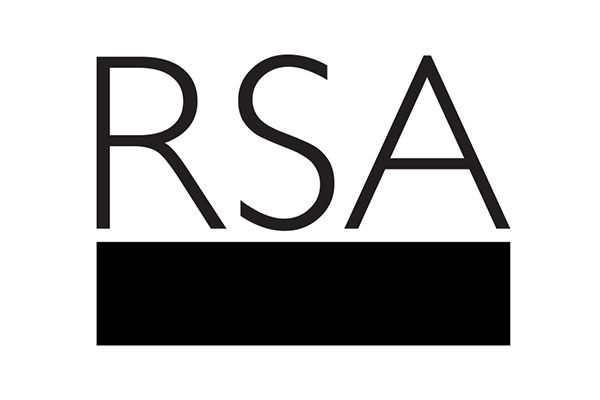I am speaking next week about communities and it is an area of growing significance to RSA research. Here are my musings. But given this post is five times as long as a blog should be and given that, despite my best endeavours, the prose is both complicated and constipated, I am personally promising £5 to the nominated charity of the first ten people to leave intelligible (not necessarily positive) comments on my site. (PS For my more superficial readers, I am also going to return very briefly to the McBride affair later on today)
Earlier this week I referred to important new American research on the relationship between social support and pro-social behaviour. The unsurprising but significant conclusion was that people with greater access to support, whether from family, neighbourhood, church or close friends, are more likely to behave in socially benign ways.
The behavioural explanation is that altruism as a strategy succeeds in socially supportive environments, whereas selfishness may be the best (short term) policy in more atomistic or hostile settings. Good things go together; if we want good citizens we need to ensure people have strong networks of support around them. Safe, secure and happy people will tend to be more generous, thoughtful and willing to defer gratification.
One implication is that strategies to encourage ‘pro-sociality’ should focus less on exhortation, specific incentives and sanctions and more on creating an environment where such behavioural patterns pay off.
But how does this fit with my belief in cultural theory (or as it less confusingly, but more cumbersomely, called ‘the theory of plural rationality’)? This suggests that, when groups work together to solve a problem, distinct and competitive models for understanding and acting upon the world will emerge; namely, ‘the hierarchical’, ‘the individualistic’, ‘the egalitarian’ and ‘the fatalistic’.
So, how can it be true both that there are some social environments which encourage particular attitudes and behaviours (which could be said broadly to fit an egalitarian outlook) while, at the same time, in relation to any specific problem or decision, a set of conflicting responses (of which egalitarianism is only one) will emerge?
The simple explanation is that one effect outweighs the other. Egalitarian impulses are stronger in tighter communities but, in relation to any specific group dilemma, cultural theory’s four rationalities will quickly assert themselves. Conversely, it may be that the cultural theory dynamic is much less powerful in contexts where one way of viewing the world is dominant; in a strong, close-knit, community the egalitarian perspective may always dominate.
After all, the four rationalities are not personality types; they are situational interpretations and strategies. But this doesn’t mean people and groups don’t have general predispositions towards certain ways of viewing the world. The default rationality for army officers will be hierarchical, for city brokers individualist, and for social workers egalitarian (or maybe, after the press they’ve been having, fatalist).
Take a concrete example; say, staff morale. In all these professions a debate about how to tackle low morale will generate hierarchical solutions (e.g. stronger leadership and rules), individualist solutions (e.g. more staff autonomy, better individual incentives), egalitarian solutions (e.g. empowering the front line, engaging all staff in developing a new mission) and fatalist (e.g. accepting that some people will always be miserable at work).
The contrast between the different approaches and the tendency towards polarisation between them will exist in any context. However the centre of gravity of the debate will differ; a hierarchical solution in social work will be much less hierarchical than one in the army, an egalitarian solution in the City is likely to be couched in individualist terms.
This is a credible account, if a bit complex, but perhaps we can be a more concrete, and in so doing reconnect social and cultural theory to thinking about the brain.
Reflecting, in the paper ‘Health and the Ecology of Altruism’, on how we respond to stress, David Sloan Wilson and Mihaly Csikszentmihalyi say:
‘ Because there is no single best strategy for all situations, a mix of strategies will be maintained in the population through a number of proximate mechanisms, including short-term individual flexibility (e.g. becoming cautious in dangerous situations), developmental processes (e.g. becoming temperamentally cautious as a result of childhood experiences), and long-term evolutionary processes (e.g. being innately cautious) ‘
From this perspective it might be argued:
a) human beings have an innate predisposition towards a core sets of rationalities (we are hard wired to a finite number of strategies for group problem solving)
b) contexts (such as a community or a profession) can instil a temperamental leaning towards one rationality, as can individual personality
c) but every exercise in group problem solving has a tendency to generate a dynamic in which different rationalities emerge and compete
In relation to pro-social communities this generates a new hypothesis. Instead of the goal being to create an egalitarian culture (e.g. one of strong group membership, shared values etc) in the hope that this cultural orientation might predominate over individualist, fatalistic and hierarchical world views, the aim is to create a context in which each way of thinking about the world can be expressed, but in a way which values diversity and creates synergy.
In other words, the strength of strong communities lies less in everyone sharing the same view of the world (something which would carry with it risks of group think) but in creating the kind of space in which people can disagree creatively.
This thesis appears – at least superficially - to chime with the conclusion of research on sustainable community development reported by Ann Dale and Lenore Newman.
‘ In a changing and unpredictable world, sustainable community development is less a goal than a dynamic process of working with the resources and information at hand. In order to sustain this dynamic interactive process, communities need to anticipate and respond to these dynamics and nurture their resilience in order to innovate and diversify’
Related articles
-
Imagining a better future through foresight – why the metaphors we use matter
Adanna Shallowe
As we begin to imagine the post-pandemic world, we need to challenge our use of old metaphors to allow for new narratives and better futures to emerge.
-
Polarised: The RSA podcast exploring the politics of division
James Shield
Is it really true that we’ve never been more divided as a society? And if it is, how did it happen and what can be done?
-
How can we give up bad habits for good?
Ian Burbidge
With the post-Christmas resolutions looming, when we try to address the worst of our seasonal over-indulgences, the question remains: how can we give up bad habits for good?




Be the first to write a comment
Comments
Please login to post a comment or reply
Don't have an account? Click here to register.